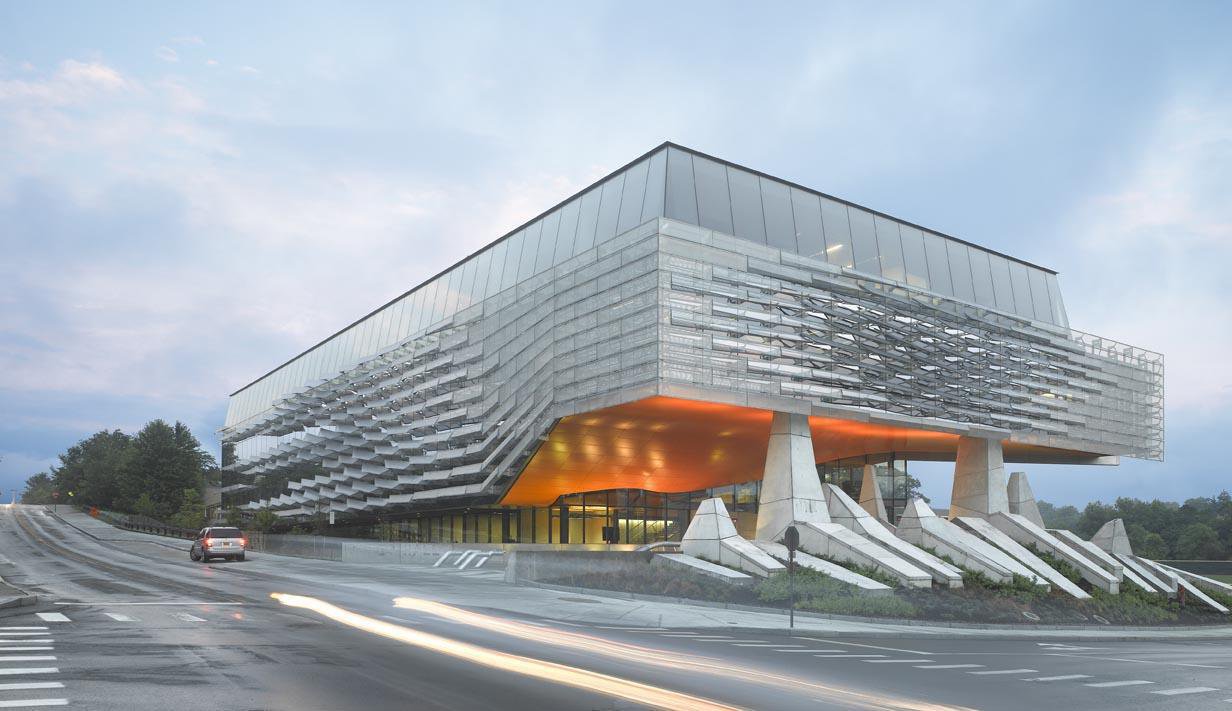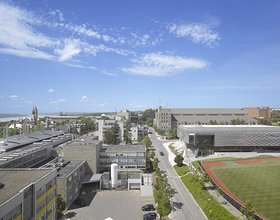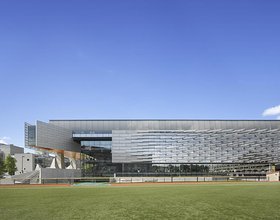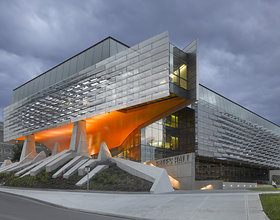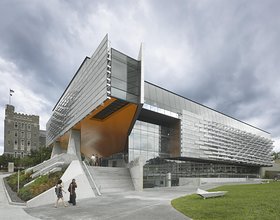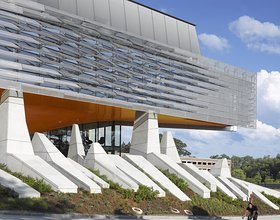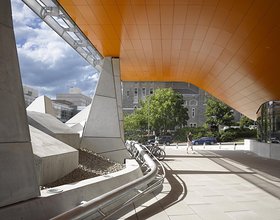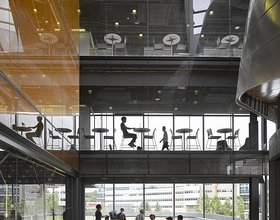BILL & MELINDA GATES HALL
-
Gates Hall at Cornell University brings together the school’s Computing Science and Information Science departments in a new joint facility designed to generate collaboration and spontaneous discourse between the disciplines. Through various strategies amplifying visibility, transparency, and social interaction, the new building interprets the departments’ shared educational mission to “integrate computing and information science - its ideas, technology, and modes of thought - into every academic field.”
Neighboring the historic Barton Hall and Hoy Field, Gates Hall re-energizes a previously underutilized campus corner, creating a new campus gateway and frontage. Surfaced in vibrant stainless steel panels, the building’s cantilevered entry canopy covers an outdoor plaza and student social space also defined by native landscaping and sculptural forms. The performative steel skin wraps the exterior façade in an angular weave, shading interior classrooms and creating a continuously dynamic and transformative surface. Advanced digital modeling tools used in designing the pattern, geometry, and details of the skin speak to the profound impact of computing on the arts and sciences.
The building program is organized to foster serendipitous social and academic exchanges, extending education beyond traditional classroom settings. Primary circulation is organized around a glazed atrium on the west side of the building where a full-height glass facade, skylights, and interior envelope of fritted glass reveal a nexus of activity on all floors. Ringed with informal study and collaborative spaces, the atrium provides literal and visible connections across disciplines. Encounters and impromptu charettes are facilitated by regular alcove spaces in the corridors, where the floor-to-ceiling glazing lining classrooms and offices becomes a transforming canvas for graphics, blackboard equations, and casual notes.
Gates Hall’s integrated sustainability systems express Cornell’s commitment to environmental stewardship, using multiple strategies to create healthier environments, reduce energy consumption, and preserve natural resources. Designed for ample daylight penetration, Gates Hall employs openness and transparency to create work environments that are more healthful for students, both physically and mentally. The high-performance glass façade, perforated metal shading screens, and mechanical system using campus lake-source cooling contribute to Gates Hall achieving 30% lower energy usage than a typical academic building. To decrease the environmental impact of construction, local/regional, recycled and renewable building materials are used throughout the building.
Photo credits: Morphosis Architects
1870 Projects

